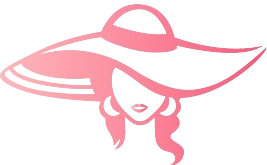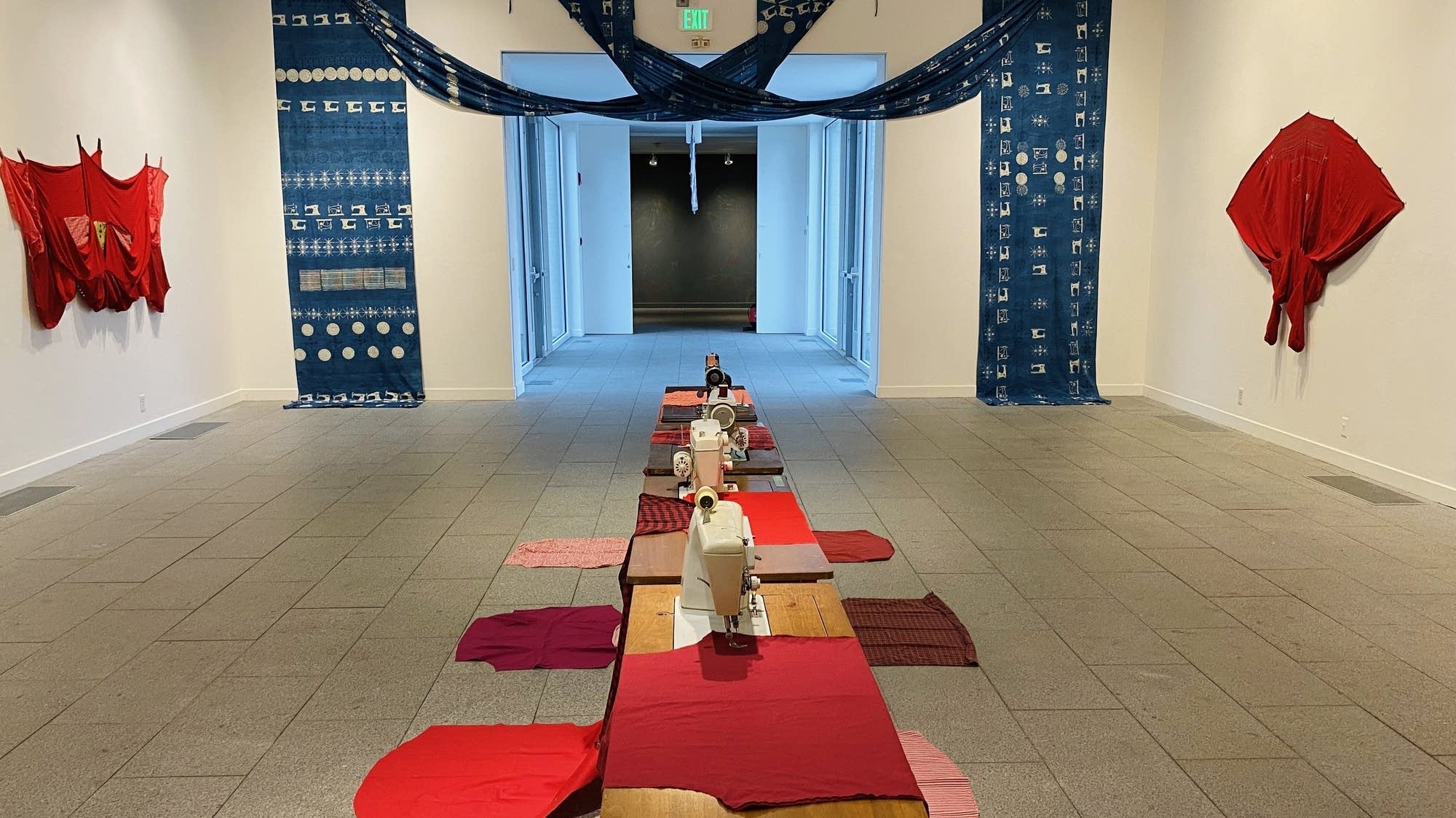The consumption of clothes and the labour rights of garment workers are topics of discussion at a textile-themed craft show at Saint John’s University in Collegeville, Minnesota.
The Minneapolis designer Rachel Breen’s” At the Root: Substances and Power” exhibition is on display through December 9 in the Saint Johns University art museum.
Breen and kids created a walls drawing as one site-specific piece of art. They made stencils using a sewing machine without thread, which they then applied to the museum walls using gentle pastels. T-shirt collars and sleeves are shown in the gathering extending in various information.

The red and gold colors of the International Ladies ‘ Garment Workers union’s founding banners from 1900 are used in the piece” Banner for Solidarity# 5: Towards a Common Future.”
kindness of Rachel Breen
Breen, who is also a teacher of art at Anoka-Rawson Community College, says,” It is this analogy for labor.” ” Wings are what we work with, but sleeves are truly important to me because they cover our hands.”
MPR News has the backing of Associates. Whatever you find these is powered by products from individuals. To join, make a gift of any number right away!
The song” Red Sea: April 2002″ by Aurora Levins Morales served as the inspiration for the item, which is titled” All Of Us or None of Us.” The Israel-Gazil war started in October as they were installing the roof drawing, and its significance changed.
I felt it was crucial to answer to that in a poetic way because I am Hebrew, according to Breen.
According to Breen, the bit extends an offer of solidarity to those who have been impacted by the battle with the people who make our clothing.

In 2022, Rachel Breen ( left ) studied the garment industry in India as a Fulbright Scholar.
kindness of Rachel Breen
” We’re also related to those who are fighting and dying in this conflict. We ought to experience a connection to them, according to Breen. ” I do want to see a ceasefire, and I do n’t think what we’re doing now will lead to any sort of resolution.” Fighting is not the solution, I hoped my wall drawing was convey that.
Breen draws on the background of the cloth market and the hazardous circumstances it creates for those working in it to create the numerous textile works in the exhibit, which are all made from disassembled and reconstructed used clothing. Her writing is reminiscent of the 1911 Triangle Shirtwaist Factory flames, which claimed the lives of 146 staff. Additionally, Bangladesh’s Rana Plaza garment factory collapsed in 2013, killing more than 100 individuals.
Breen says,” As someone who worked with a sewing machine, I soon felt really connected with these garment employees.”

Actor Rachel Breen collaborated with Saint John’s students to sew a roof drawing called” All Of Us or None of Us” without string.
kindness of Rachel Breen
The show is based on Breen’s in-depth analysis of these incidents and their aftermath, as well as the impact of the fast fashion industry on climate change. She went to Bangladesh to speak with the people who had survived the Rana Plaza decline. Breen conducted studies at Cornell University’s Kheel Center work library in 2021. In 2022, she traveled to India to study the clothing industry as a Fulbright Scholar.
Breen claims that despite the fact that I had previously supported unions before beginning this study, it has become increasingly apparent how crucial unionization is for gown workers, both at the turn of the century and in nations like Bangladesh.
A nod to the banners created for the International Ladies ‘ Garment Workers Union’s founding in 1900—a union she learned about while conducting research at the Kheel Center—red and golden hues are used in many of the cotton works in the exhibition.
A top with 11 arms is one of her creations.
Breen claims that “literally, 11 people had all put their arms through the arms and subsequently use it.” What does it mean if 11 people wear the same outfit up? It would entail that people would really need to discuss how to proceed. And that serves as the metaphor for the concept of” collective power.”

